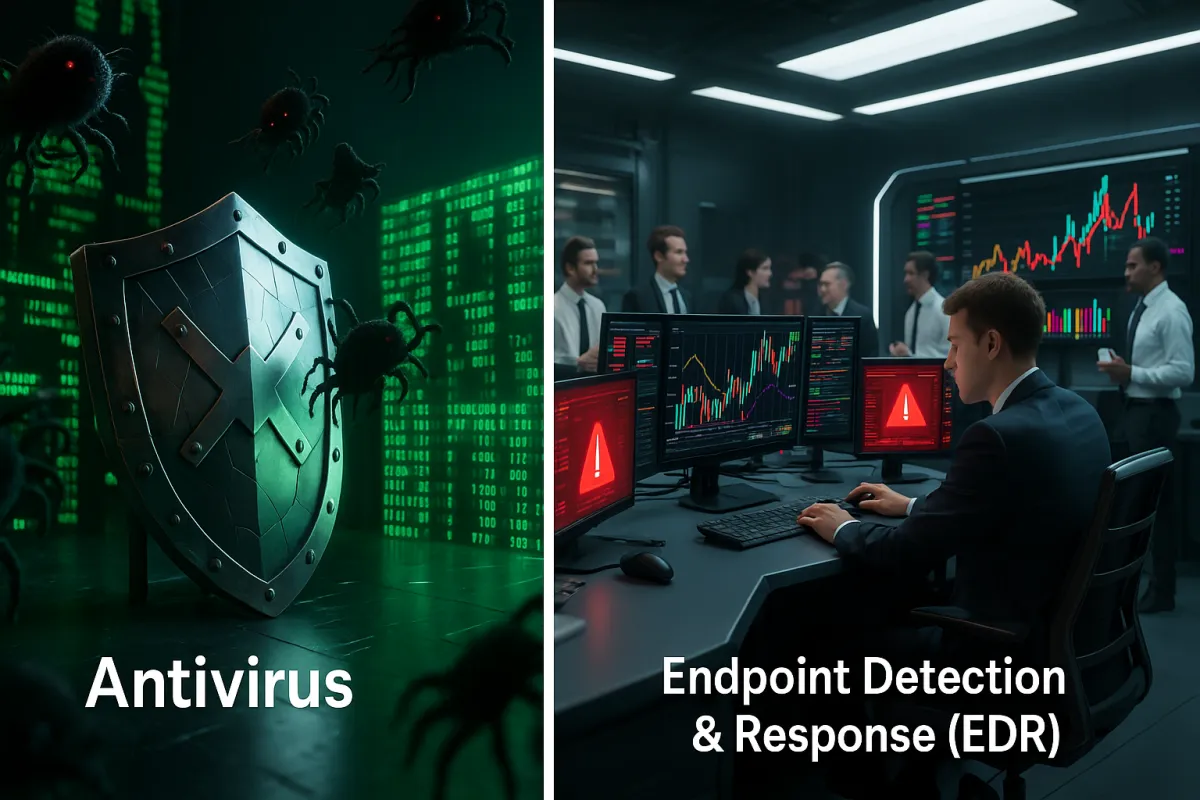Tel: 650-980-4870
Blog

AV vs. EDR
The differences between antivirus and Endpoint Detection and Response (EDR), are broken down in a clear and straightforward way.
Antivirus
Antivirus software is a traditional security solution designed to protect devices from malware, viruses, worms, trojans, and other known threats. Its primary focus is on prevention by identifying and blocking malicious software before it can cause harm. Here’s what defines antivirus:
Signature-Based Detection: Antivirus relies heavily on a database of known malware signatures to detect threats. If a file matches a signature, it’s flagged and dealt with (quarantined or deleted).
Prevention Focus: It’s mainly about stopping malware from executing in the first place through real-time scanning of files, emails, and downloads.
Limited Scope: Traditional antivirus often struggles with zero-day attacks (new, unknown threats) or advanced persistent threats (APTs) because it depends on pre-existing knowledge of malware.
Basic Response: Actions are usually limited to isolating or removing the detected threat without much insight into how it got there or what it did.
Think of antivirus as a gatekeeper that checks IDs against a list of known troublemakers. If someone’s not on the list, they might slip through.
Endpoint Detection and Response (EDR)
EDR, on the other hand, is a more modern and comprehensive cybersecurity solution focused on detecting, investigating, and responding to threats across endpoints (like laptops, desktops, servers, and mobile devices). It goes beyond prevention to provide deeper visibility and active threat management. Key aspects include:
Behavioral Analysis: EDR uses advanced techniques like machine learning and behavioral monitoring to detect suspicious activities, even for unknown threats or zero-day attacks. It looks at how processes and users behave rather than just matching signatures.
Continuous Monitoring: EDR solutions constantly collect and analyze data from endpoints, giving a real-time view of what’s happening across a network.
Incident Response: Unlike antivirus, EDR emphasizes post-detection actions. It helps security teams investigate the root cause of an attack, track its spread, and remediate it—often with features like threat hunting and forensic data collection.
Broader Protection: EDR can catch sophisticated attacks, insider threats, and fileless malware that traditional antivirus might miss since it doesn’t rely solely on known signatures.
Picture EDR as a security camera system with a team behind it—watching everything, analyzing odd behavior, and jumping into action to mitigate damage after an incident.
Key Differences
To sum it up, antivirus is reactive and focused on preventing known malware, while EDR is proactive and geared toward detecting, analyzing, and responding to a wider range of threats, including those that slip past traditional defenses. Antivirus is like a basic lock on your door, while EDR is a full security system with alarms, cameras, and a response team. Many organizations use both together—antivirus as a first line of defense and EDR for deeper protection and response capabilities.
Menu
Services
© Copyright 2023. Optimal Outcomes. All rights reserved.
